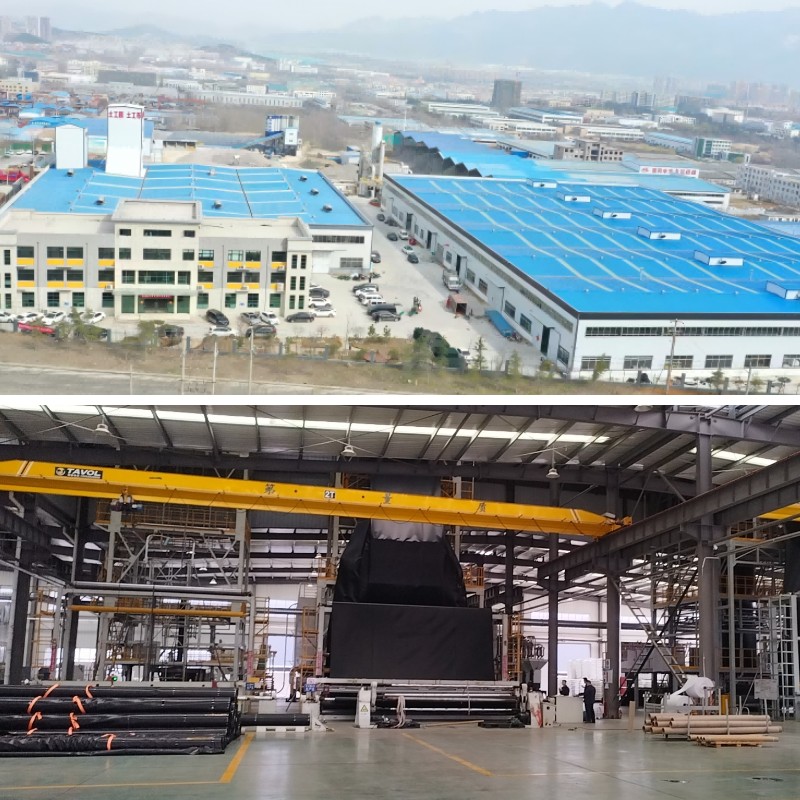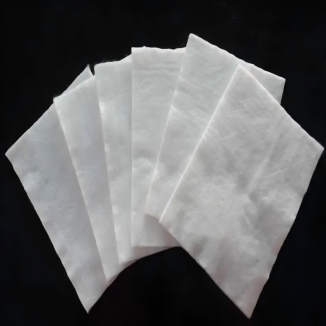HDPE Geomembrane for Pond Liners: How to Select, Install, and Maintain for Maximum Efficiency
Ponds play indispensable roles in agriculture, landscaping, water storage, and aquaculture, however their performance depends totally on a reliable liner. A poorly chosen or set up liner leads to leaks, water loss, and high priced repairs. Among all options, HDPE geomembrane stands out as the gold widespread for geomembrane pond liner solutions, providing unmatched durability, chemical resistance, and long-term performance. Whether you’re constructing a new pond or changing an historic liner, appreciation how to select, install, and maintain HDPE lining for ponds is key to maximizing effectivity and heading off headaches. Below is a step-by-step breakdown with actionable recommendation for each and every stage.
1. Selecting the Right HDPE Geomembrane for Pond Liners
Choosing the correct HDPE geomembrane isn’t a one-size-fits-all process—your pond’s purpose, environment, and price range will information the first-rate choice. Skipping cautious choice can lead to untimely failure, so focal point on these integral criteria.
First, think about thickness, which must align with your pond’s usage. HDPE geomembranes for ponds generally vary from 0.5mm to 2.0mm. For mild use, such as ornamental ponds or small water features, 0.5mm–0.75mm liners work well: they’re flexible, effortless to handle, and budget friendly for low-traffic, non-commercial settings. For heavy use—like agricultural irrigation, aquaculture, or industrial storage—opt for 1.0mm–2.0mm liners. These thicker preferences withstand punctures from farm equipment, fish nets, or sharp debris, making them best for HDPE lining for ponds that face ordinary wear. Always affirm thickness meets enterprise requirements (e.g., ASTM D7467 for geomembranes) to make certain quality; a thicker liner may also price extra upfront however reduces leak dangers and saves cash long-term.
Next, prioritize cloth excellent through selecting virgin HDPE. Not all HDPE geomembrane is equal—avoid recycled or blended options, as they regularly incorporate impurities that weaken the cloth and decrease resistance to UV rays, chemicals, and temperature changes. Virgin HDPE (high-density polyethylene) is non-toxic, making it secure for fish, plants, and consuming water storage (critical for aquaculture or agricultural ponds). It additionally withstands harsh weather, from freezing winters to sizzling summers, besides cracking or degrading, making sure your geomembrane pond liner lasts 20+ years. Look for certifications like ISO 9001 or GRI-GM to verify reliability.
Finally, focal point on measurement and customization to limit seams— the most frequent failure factor in HDPE lining for ponds. Every seam will increase leak risk, so intention for a single, custom-cut liner that matches your pond’s specific dimensions. Measure carefully, accounting for slopes, depth, and a 12–18 inch overlap alongside edges (to tightly closed the liner to banks). Work with suppliers who provide customized fabrication; they can reduce the HDPE geomembrane to your specifications, decreasing seams and simplifying installation. If your pond is too massive for one liner, make sure the provider makes use of warmth welding (the strongest seam method) alternatively of adhesive, which peels easily.
2. Installing Your HDPE Lining for Ponds
Even the highest-quality HDPE geomembrane will fail if hooked up incorrectly. Proper set up ensures the liner stays in place, types a tight seal, and resists damage. Follow this system for leak-proof results.
Start with web page preparation, as the floor underneath your geomembrane pond liner must be clean, level, and free of sharp objects—any particles (rocks, roots, sticks) can puncture the HDPE. Clear the website online of grass, weeds, and massive debris, then use a rake to easy the floor and until the soil to damage up clumps. For ponds with rocky soil or excessive traffic, add a geotextile material underneath the HDPE lining for ponds; this acts as a buffer, stopping punctures and extending the liner’s life. Also, degree pond banks to a gradual slope (no steeper than 3:1) to cease the liner from sliding as soon as water is added.
Next, unroll and function the HDPE geomembrane. These liners are heavy, so enlist help—never drag the liner throughout the ground, as this can scratch or tear it. Choose a calm day to unroll (wind can blow the liner out of place), then align it so the 12–18 inch overlap extends evenly over all pond edges. Leave 1–2% slack in the liner’s size to account for soil contract or water pressure; too a great deal anxiety will stretch the liner and spoil seams. Secure the liner briefly with sandbags or panorama stakes (avoid sharp stakes that pierce HDPE) whilst ending installation.
For massive ponds requiring a couple of liner pieces, seal seams with warmness welding—the solely dependable method. This system melts HDPE edges, fusing liners into a single, leak-proof sheet. Hire a expert for this step: warmth welding desires specialised tools (hot air weapons or wedge welders) and expertise, and licensed installers will check seams with a vacuum or air stress check to make sure watertightness. Avoid DIY seams with adhesives or tape; these spoil down in water and sunlight, main to leaks inside months.
Finally, tightly closed the liner edges to stop shifting. Dig a 6–8 inch trench alongside the pond’s perimeter, fold the liner’s part into the trench, and backfill with soil or gravel—this anchors the liner and hides edges for a neat finish. For steeper banks, connect the liner to pressure-treated timber boards (secured to stakes) to hold it from sliding.
3. Maintaining HDPE Geomembrane Pond Liners
HDPE is low-maintenance, however normal care ensures your geomembrane pond liner stays environment friendly (no water loss, no damage to aquatic life) for decades. Follow these suggestions to maintain it in pinnacle condition.
Conduct ordinary inspections at least twice a yr (spring and fall) and after extreme climate (storms, hail, floods). Check the HDPE geomembrane for punctures, tears, or fraying, focusing on seams, edges, and areas close to pond gear (pumps, filters). If you note a surprising water stage drop, look at closely—use a soapy water answer (spray on the liner; bubbles structure the place water escapes) to locate small leaks. Also, clear leaves, branches, and sediment from the liner’s surface; particles traps moisture and motives mildew or algae growth, which doesn’t harm HDPE however hides doable troubles in the course of inspections.
Clean the liner gently when algae or mineral deposits construct up—harsh techniques scratch the surface. Use a nylon brush (avoid wire brushes) and mild, non-toxic detergent (e.g., dish soap) to scrub algae, then rinse with water to cast off cleaning soap and debris. Never use bleach or chemical cleaners; they damage aquatic lifestyles and degrade the liner’s surface, shortening the lifestyles of your hdpe lining for ponds.
Repair small damages immediately—even tiny holes develop into massive problems. For holes much less than 1 inch, use an HDPE patch package (from liner suppliers): easy the location round the hole, observe the patch (follow package instructions), and press firmly for a tight seal. For large tears or seam failures, contact a expert installer; they’ll heat-weld a new HDPE piece to the liner for a everlasting fix.
Adjust upkeep for seasonal risks. In winter, keep away from strolling on frozen pond ice (it can crack the liner) and get rid of snow from the ice to stop extra weight damage. In summer, use a pond cowl or color fabric to decrease UV publicity (while HDPE is UV-resistant, extended direct daylight weakens it over time) and trim overhanging tree branches to quit falling limbs from puncturing the HDPE geomembrane.
4. Why HDPE Geomembrane Beats Other Pond Liner Materials
You may additionally surprise why HDPE geomembrane is higher than PVC, EPDM, or clay—and the reply lies in its special combine of durability, efficiency, and value, making it the pinnacle preference for geomembrane pond liner projects.
HDPE affords greatest sturdiness in contrast to PVC and EPDM. PVC liners are bendy however crack in bloodless climate and degrade from UV rays; they additionally include plasticizers (chemicals that soften them) that leach into water, risking aquatic life. EPDM liners (rubber-based) are bendy however highly-priced and much less puncture-resistant, plus they require adhesive seams that fail extra regularly than HDPE’s heat-welded seams. In contrast, HDPE geomembrane lasts 20+ years (vs. 5–10 years for PVC/EPDM), resists punctures and UV rays, and doesn’t leach chemicals—making it safer for long-term use.
It’s additionally not pricey over time. While HDPE liners have a greater upfront price than PVC, they shop cash by means of decreasing repairs (fewer leaks imply no standard fixes or replacements) and reducing water loss—a leak-proof hdpe lining for ponds cuts waste, which is essential in agricultural or drought-prone areas the place water is expensive.
Finally, HDPE is versatile for any pond type. Whether you’re constructing a small outside pond, a massive irrigation reservoir, or a industrial fish farm, it adapts to your needs. It’s secure for ingesting water, fish, and vegetation (certified for potable use) and resists chemicals, making it best for industrial ponds that keep fertilizers, pesticides, or wastewater.
Final Thoughts: Invest in HDPE for a High-Efficiency Pond
A pond’s overall performance relies upon on its liner, and HDPE geomembrane is the most dependable alternative for geomembrane pond liner projects. By deciding on the proper thickness and quality, putting in properly, and retaining regularly, your hdpe lining for ponds will supply a long time of leak-free, environment friendly performance.
If you’re beginning a pond project, work with a respectable provider that presents extremely good virgin HDPE and expert installation. With the proper setup, your pond will serve your needs—whether for irrigation, aquaculture, or landscaping—for years to come.
Contact Us
Company Name: Shandong Chuangwei New Materials Co., LTD
Contact Person :Jaden Sylvan
Contact Number :+86 19305485668
WhatsApp:+86 19305485668
Enterprise Email: cggeosynthetics@gmail.com
Enterprise Address: Entrepreneurship Park, Dayue District, Tai 'an City,
Shandong Province









